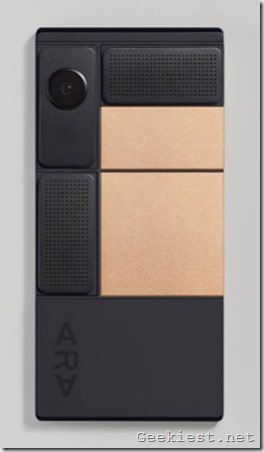Project ARA is a name we remember back from two years ago, when Google announced some pretty ambitious plans, for making its own modular phone. It was what I would like to call the "Geekiest Dream" of smartphone afficionados. But that dream could well be over, according to a Reuters report, which says Google has shelved the plans for Project ARA.

The news outlet reports that Google’s Advanced Technology and Projects group, aka ATAP, which is now handled by Rick Osterloh (former President of Motorola Mobility and an ex-Googler), decided to axe Project ARA in favour of a unified Google hardware brand.
We saw some reports yesterday that say that Google is rebranding its Nexus phones, under the Pixel brand, and that the HTC Sailfish Nexus and HTC Marlin Nexus will be called Pixel and Pixel XL respectively. So, it wouldn't surprise us if Project ARA was abandoned, because the company wanted its ATAP team to design the Pixel phones and tablets.
Reuters also says that it spoke to Google employees familiar with Project aRA, and that they think that the Mountain View company could be working with other manufacturers to bring Project ARA to the market. Google could license some patents to OEMs for doing so, and if this is true, the project is not completely abandoned.
But don't get your hopes up, like we did last year, when Google wanted to test Project ARA’s market in Puerto Rico, and instead we now stand at a point where ARA is on the verge of going poof. Here's my take on why Google may have abandoned Project ARA. There are already devices, with modular accessories which kind of do what ARA set out to achieve, but only slightly. The main problem is the cost of these mods.
Earlier this year, LG made the headlines with its 2016 flagship device, the LG G5 which came with modular accessories. These were camera mods, and a bunch of accessories, including a replacable battery mod which slides out of the bottom of the phone. While I found the design of the LG G5 to be dull, the mods for the device were quite intriguing.
Motorola, on the other hand, had a much more impressive line of modular accessories, called Moto Mods, for its flagship phones, Moto Z and Moto Z Force. The mods which included a projector, a speaker and camera mods, snapped on to the back panel of the phone to transform the device into a much more powerful one. Even the recently announced Moto Z Play with its Hasselblad camera mod, is pretty impressive.
But I don't think any phone comes close to what Project ARA was originally designed for. Attaching mods to the phone (as described above) to give it some new features, when you need it is cool, but swapping a hardware part to give it some functionality was way cooler. I think Project ARA also had the potential to let the user upgrade it with new hardware, similar to what desktop users do with their PC. You could probably buy some new mods and use them with ARA, instead of upgrading an entire device. It was this interchangeability, the customization it offers, which made us look at Project ARA in awe.